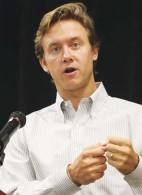
State Sen. Michael Johnston, a supporter of Common Core
The first countrywide assessment of the Common Core State Standards (CCSS) will take place during the 2014-15 school year. The once popular standards have now come under fierce attack. Critics on the left are concerned about protecting public education from corporate interests, as private companies stand to profit from the CCSS materials and assessments. Opponents on the right fear the federal government usurping local control of the schools. And skeptics across the political spectrum worry about the effects of “testing fatigue” on children, the fairness of tying teacher evaluations to student test scores, and the risk of quashing creativity through an overemphasis on standardized modes of thinking.
For this Front Porch article, we wanted to go beyond the politically charged national controversy and glean a deeper understanding of the CCSS and their impact on our neighborhood schools. So we turned to area experts. We spoke with State Sen. Mike Johnston (D-Denver) and convened a discussion group consisting of Denver School Board member Landri Taylor (District 4), principals Marcia Fulton (Odyssey), Liz Tencate (Swigert), Jill Corcoran (Westerly Creek); and fifth-grade math, science, and social studies teacher Marie Gruber (Westerly Creek). Our conversations revealed not only the complexity of and the controversy surrounding the CCSS, but also the promise this educational revolution holds for students.
What are the CCSS?
The CCSS represent a major shift in our nation’s educational policy. Public school standards and assessments have historically been developed and administered at the district and state level. By contrast, the CCSS are an effort to create what Sen. Johnston refers to as 21st century thinking skills through rigorous shared standards. Instead of each state setting its own standards and “speaking 50 different languages,” explains Johnston, a shared set of standards will enable educators across the country to share materials, lesson plans and best practices.
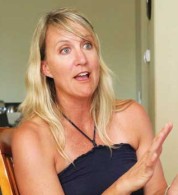
Liz Tencate, principal, Swigert
What’s more, a shared set of national standards seeks to repair what Johnston refers to as “broken parts of the standards movement.” He says that since past federal programs like No Child Left Behind sought to preserve local control of education by enabling states to set their own standards, there was no safeguard against a so-called “race to the bottom”—wherein states set their standards low enough to ensure a majority of students met or exceeded them. While this strategy engenders impressive statistics, it fails children in the long run. A lack of accountability has left many American youth unprepared for college and less competitive in the increasingly global marketplace.
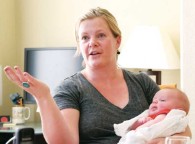
Marie Gruber, teacher, Westerly Creek
To remedy these pressing problems, the developers of the CCSS state they have drawn on “the most important international models as well as research and input from numerous sources, including state departments of education, scholars, assessment developers, professional organizations, educators from kindergarten through college, and parents, students, and other members of the public.” Based upon this research, the CCSS initiative—spearheaded by the Council of Chief State School Officers and the National Governors Association—created a set of learning objectives they tout as:
- Research and evidence based
- Clear, understandable, and consistent
- Aligned with college and career expectations
- Based on rigorous content and the application of knowledge through higher-order thinking skills
- Built upon the strengths and lessons of current state standards
- Informed by other top-performing countries to prepare all students for success in our global economy and society
The standards are objectives, not a specified curriculum, for the subject areas of math and English language arts/literacy. They emphasize higher order, critical thinking and active engagement with learning. For example, a set of literacy standards intended to instill the “integration of knowledge and ideas” builds from kindergarten through second grade in the following manner:
Kindergarten: “With prompting and support, describe the relationship between illustrations and the text in which they appear (e.g., what person, place, thing, or idea in the text an illustration depicts).”
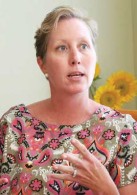
Jill Corcoran, principal, Westerly Creek
First Grade: “Use the illustrations and details in a text to describe its key ideas.”
Second Grade: “Explain how specific images (e.g., a diagram showing how a machine works) contribute to and clarify a text.” (www.corestandards.org).
How are the standards influencing our neighborhood schools?
Colorado joined the CCSS Initiative in 2010. The State Board of Education then gave districts a deadline of the 2014-15 school year to fully adopt the standards. Schools in our area have been using this time to realign their curricula, which has been no easy task. Tencate explains that while she found the CCSS general enough to complement the International Baccalaureate program Swigert features, there was still a significant jump; “the new standards are higher” than past grade-level objectives at the school she leads.
Gruber concurs, noting that the “biggest gap was in math.” Gruber estimates that there is a “one-year gap” between the previous state standards and the new CCSS. Fulton describes the weekly teacher trainings, the revamping of expeditions, and the complete reorientation of how kids are expected to think and to explain their thinking that the integration of CCSS required at Odyssey. “It’s good learning; it’s big work!” Fulton said, eliciting vigorous nods of agreement from the educators in the room like Gruber, who describes waking up at 4am daily to prepare for class in a manner that best supports her students’ acquisition of the skills necessary to succeed on the new assessments.
Corcoran recognizes what the implementation of these new standards is asking of the staff she leads. “It requires a lot of time,” she says as she explains her process of coordinating release days with teachers prior to new units so they can compare the new standards to the existing DPS curriculum and create fresh lesson plans and strategies for educating their students.
Despite the learning curve, the hard work, and the long hours, the educators we spoke with believed the standards are good, that they will prepare students for college, career and life and that students will rise to the occasion. Fulton shares how gratifying it is to see “kids’ light bulbs go off” when they began to grasp the higher order thinking. With similar enthusiasm, Gruber acknowledges that in the absence of a canned curriculum, “teachers are being given greater trust and flexibility,” which she finds exciting. Parents too, suggests Corcoran, are ready for their kids to be challenged by the higher standards.

Marcia Fulton, principal, Odyssey
How will the standards be measured?
Since 2010, the Partnership for Assessment of Readiness for College and Careers (PARCC), a consortium of 14 states—of which Colorado is one—has been developing and testing the CCSS assessment. Starting next spring, the PARCC assessment will be administered annually across the nation. Test scores will provide a comparison of student performance and will measure individual student growth. Eventually, the assessment scores will also be considered as part of teacher and school evaluations.
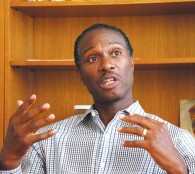
Landri Taylor, school board member, DPS
Johnston champions the quick turnaround time of student data promised by PARCC, which seeks to provide “usable data” for educators to evaluate student growth. (Tests will be taken on computers.) Although Fulton agrees that usable data delivered in a timely manner is a potential benefit of the PARCC assessment, she has concerns about testing fatigue among children with the addition of PARCC evaluations to existing district and statewide measures. Corcoran listed a formidable series of exams students at Westerly Creek take each year and Gruber surmised that as much as 30 percent of instruction time is spent preparing for and administering assessments each year.
Johnston admits that the “over-testing” critique is the strongest argument against the CCSS. The Colorado Legislature has recently formed a commission to study the testing requirements, instruction time spent on test administration, the uses of testing data, and ways the district, state and national tests can work together.
Looking at the bigger picture, Taylor wonders if a test is even the best way to measure the outcomes we seek. A proponent of CCSS, Taylor favors consistent objectives across state lines, but is concerned that the standards may not be aligned with the testing. In what Gruber refers to as an increasingly “pay for performance” district, there are serious consequences for using potentially misaligned data to evaluate teachers.
Why the Common Core Matters
While none of the educators in our group opposed the learning objectives promoted by the CCSS Initiative, the forthcoming assessment of those standards is causing anxiety. This “nervousness is understandable,” says Fulton, as the national standards bring with them a “layer of change . . . a nationally normed level of accountability,” the likes of which our country has never before seen.
Even as Fulton understands the anxiety, she celebrates the assessment’s potential. She refers to the CCSS initiative as a “beautiful opportunity to level the playing field.” The assessments, Fulton says, will show us where we must improve, providing a benefit in the short and long term if all kids are served. Johnston agrees, referring to the achievement gap as the animating reason to implement the standards. He contends: “We have to tell hard truths.”
Taylor is cautious, maintaining that it’s too early to speculate about the long-term benefits of this major shift in educational policy. The school board member nevertheless lauds the Common Core’s immediate benefit: “We’re all talking about education,” he says with a smile.
Readers can try out sample PARCC test questions at http://parcconline.org/samples/item-task-prototypes.
How do PARCC questions differ from the tests Colorado has been using? Following are examples of questions that have appeared in Colorado’s tests in the past but are no longer being used. http://www.cde.state.co.us/assessment/coassess-released




As a resident of Park Hill and a recently retired AP English teacher in Cherry Creek Schools, I was disappointed in your article about Common Core. There are several reasons to be skeptical about these so-called reforms. Resources, both in money and time, are being diverted to an unproven test. Last spring, I testified before the State Board of Education and both the Senate and House Committees on Education, defending a proposal to postpone and study PARCC tests. I came away feeling that many legislators did not have sufficient background to be making informed decisions, but also that most were willing to hear from students, teachers, and administrators in developing their opinions.
However, there were exceptions. The group I am with, SPEAK for Cherry Creek, a group of concerned parents, went to the State Capitol to let their opposition to excessive testing be heard. Most legislators or their aides heard our issues; however, when we approached Senator Michael Johnston’s office, we were turned away. During the Senate Committee’s testimony on HB1202, in which teachers, parents, and administrators from around the state testified about the negative impacts of PARCC tests, Senator Johnston was either on his cell phone or eating take-away, which an aide delivered to him during testimony. Later, he referred to our organization of parents as “the Cherry Creek Cheerleaders.”
Senator Johnston’s views on education were formed during his time in Teach for America, a for-profit corporation whose business model advocates that teachers should be recruited from upper-tier schools, trained in a few weeks to deliver a prescribed curriculum, and, after three years, move on to another career. This, despite much research confirming students do better with experienced teachers.
The reformers have been repeating their talking points ad nauseam about 21st Century skills and excellence until they have become red flags to critical listeners. I believe the public knows that punitive testing has not and will not improve education, and that politicians and corporations cannot do the job of educators. I urge parents to become involved in electing leaders who are willing to dispassionately evaluate proposals to turn our public schools into revenue generators for private corporations.
What we heard from our group was they are concerned about the amount of testing but recognize value in the Common Core principles. They said they will work to raise the bar academically to meet the new standards during the difficult process of developing tests that accurately reflect kids’ knowledge and are helpful to teachers in identifying gaps in knowledge.
It’s a big subject and we think readers are interested in it, so we’ll come back to it from different angles. Tests taken internationally show the US is falling behind other countries. We’ll move forward with an eye to answering the question, “What would best help the US schools keep up with global changes and standards?” We look forward to some interesting discussions.
Thanks, Carol, for your thoughtful reply. One of the many areas of concern is a new emphasis on non-fiction reading and writing. Especially in the early years, schools should encourage engagement with texts by children becoming involved with characters with which they can identify. The new “evidence based” approach ignores the developmental stages of children.
Mr. Sondermann, I stand corrected. However, in a quick search I have found a few facts which may be germane to this discussion. One of the founding members of Teach for America (TFA) is Douglas Shulman, president and CEO of KIPP, a for-profit charter school corporation. In addition, StudentsFirst founder Michelle Rhee, who oversaw the mass closure of many Washington D.C. schools as the city’s schools chancellor, is a TFA alumna.Teach for America receives funding from local, state and federal sources and directly provides 70 percent of TFA’s political lobbying arm—Leadership for Educational Equity—which regularly supports candidates who push policies friendly to charter schools, where many TFA alumni now work. (Amy Dean, “Has Teach for America reached its Waterloo?” Aljazeera)
In characterizing TFA as for profit, I should not have used the term “for profit” simply because the organization collects millions of dollars to elect candidates who will support them, advance the charter school movement, and help alums secure six-figure salaries from charter schools.
I do not live in Stapleton but saw this via a Facebook link. There are plenty of important and legitimate issues to consider vis-a-vis Common Core. But any such discussion and critique should be grounded in a respect for facts. Don Batts’s comment above fails that test in that Teach for America is decidedly not a for-profit corporation.
http://en.m.wikipedia.org/wiki/Teach_For_America
This article attempts to remove politics from the issue of education but the writer went out and interviewed a democrat politician, a DPS broad member (read: politician) supported by said democrat, two principles (administrators) and just one teacher who I’m sure was hand selected because she agrees with the point the writer was trying to make. The people who actually have to teach the curriculum were largely unrepresented and not a single parent was interviewed. So how can you possibly give an accurate report on common core? You have slanted the story to give the impression that these changes are a great way to “level the playing field”. I agree that our current system is rife with corruption, scandal, and abuse of our children’s ability to learn but common core has time and time again shown to be backed by large corporate interests and heavy mining of children’s data. Not to mention it has been caught on several occasions changing history and facts to suit a political agenda. The writer should have spent more time interviewing parents and teachers and less time cozying up to administrators, politicians and school board members to get a real understanding of how THEY view this across the board change. My mother, and my wife’s entire family are elementary and high school teachers and they will have all expressed concerns over common core saying it is no better and in many cases worse than the system already in place.
Thank you for your comment. We understand there are many aspects to Common Core and many views about it and we didn’t cover all of them. We decided to start by seeing what Stapleton/Park Hill elementary principals think, not knowing what response we’d get. We met with all who were available for a July discussion and wrote what they had to say. As a community paper, we think including the views of local elected officials offers readers useful information about their positions on issues.Common Core is a big subject and we’ll come back to it with different perspectives in the future.
Georgians have lots of questions regarding the Common Core. This is a frank and honest discussion exploring several aspects which are problematic and areas that are showing great promise. Thanks for publishing this. Am sharing with everyone. We have to find a way to educate our kids in a meaningful,productive way.